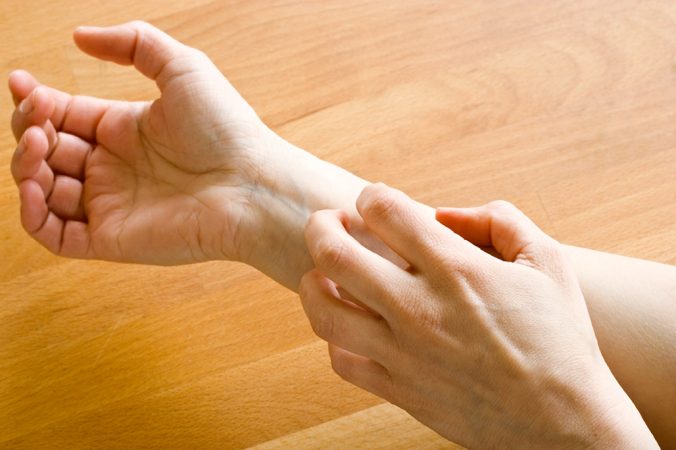An itch switch
Scientists identify a chemical that helps the brain know where to scratch

Everyone itches from time to time. Mosquito bites, a brush against poison ivy, chicken pox or even a skin sensitivity to some fabric — all can provoke the desire to scratch. But how the brain knows when and where to scratch has left many scientists scratching their heads. Now scientists at the National Institutes of Health offer a partial answer.
They identified a key player in the itching process. It’s known as Nppb (and stands for natriuretic polypeptide b). Their new tests with mice indicate that this chemical helps relay a signal to itch from the skin to the brain. Mice without it itched much less.
The new findings point to why people itch, says Glenn Giesler Jr. He’s a neuroscientist at the University of Minnesota, Twin Cities, who did not work on the new study. Understanding the role of Nppb better, he says, should lead to better treatments.
Nppb does not work alone. It aids neurons, also known as nerve cells. They form part of a vast communication network in the body. Neurons send signals, called impulses, from the body to the brain. Scientists have suspected that the sensation of an itch on the skin starts with neurons at its surface. They kick off a chain of signals. The first stop is the spinal cord. From there, more neurons relay the message to the brain.
Neuroscientists Mark Hoon and Santosh Mishra work for the National Institute of Dental and Craniofacial Research in Bethesda, Md. They knew that nerve cells relay those signals using special chemicals called neurotransmitters. To find out which ones signaled itching, they turned to mice.
The scientists first identified widely used nerve-signal transmitters. Nppb was one of them. The scientists then bred mice that were unable to make Nppb and inserted an itchy substance under their skin. The animals barely scratched. That indicated that with no Nppb, mice largely failed to detect an itch.
Next, the scientists turned to the spinal cord. They suspected its neurons relay itch signals from the skin to the brain. To test that idea, they used mice that made Nppb, but blocked Nppb’s access to spinal cord cells that should relay the itch signal. Once again, mice injected with an itchy substance barely scratched.
Clearly, mice and people differ. But they do share many of the same nervous system pathways for relaying signals. That’s why scientists suspect the new findings may point to better treatments for blocking a persistent and maddening itch.
Power Words
neuron A nerve cell. It’s a specialized cell that transmits nerve impulses between the body and brain.
spinal cord A cylindrical bundle of nerve fibers and associated tissue. It is enclosed in the spine and connects nearly all parts of the body to the brain, with which it forms the central nervous system.
neuroscience Any of the sciences that deal with the structure or function of the nervous system and brain.
neurotransmitter A chemical substance that is released at the end of a nerve fiber. It transfers an impulse to another nerve, a muscle cell or some other structure.







